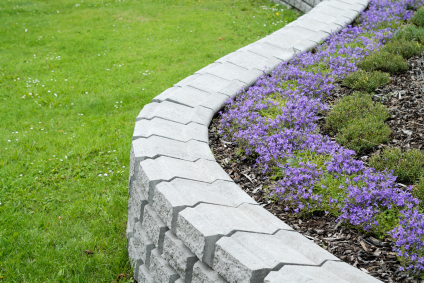How Much Does It Cost to Install a Retaining Wall?
If you have hilly property, have problems with drainage or soil erosion or have different levels to your landscaping, a retaining wall may be able to help. Retaining walls help hold back higher levels of soil elevation while also facilitating drainage. They can be made of many different materials and come in multiple lengths and heights.
The average cost to build a retaining wall is between $3,500 and $10,000, with the average homeowner paying about $5,463 for a concrete block retaining wall that is 25 feet long and 4 feet high, fully installed with reinforced concrete footing. However, costs can be as low as $1,239 for a 10-foot long, 3-foot high concrete block wall or as high as $12,029 for a 30-foot long, 5-foot high concrete block wall with a lava stone veneer.
Retaining Wall Cost
| Retaining Wall Installation Costs | |
|---|---|
| National average cost | $5,463 |
| Average range | $3,500-$10,000 |
| Low-end | $1,239 |
| High-end | $12,029 |
In this guide
What Is a Retaining Wall?
Retaining Wall Cost per Foot
Retaining Wall Prices by Type
Retaining Wall Cost by Material
Cost to Build a Retaining Wall by Location
Labor Cost to Build a Retaining Wall
Retaining Wall Replacement Cost
Average Retaining Wall Cost by Company
Retaining Wall Drainage Cost
Site Preparation
Advantages and Disadvantages
Add-On Costs
Wood vs Block Retaining Wall
Retaining Wall vs Landscaping Wall
Enhancement and Improvement Costs
Additional Considerations
FAQs
Retaining Wall Cost by Project Range
Retaining Wall Cost Calculator
Retaining Wall Cost Calculator
Want to receive more accurate estimates for your project?
What Is a Retaining Wall?
A retention or retaining wall 1 is a structure that holds soil or water. Most commonly, retaining walls are made with concrete blocks, poured concrete, treated timbers, and boulders. There are also wooden options. Though they look simple in structure, retaining walls are complex and can be used for many purposes. For starters, retaining walls improve drainage, prevent erosion, and make slopes more functional. However, they also are great for aesthetic purposes. Retaining walls can be a great landscaping feature. You can even add lights to the stone and improve the overall look of any building and the surrounding area.
There are many reasons you may need these walls on your property. For starters, you may need one if your home is on a multi-level landscape, and you need flat land for greenery to grow. Other reasons may be if you experience issues with water drainage or are concerned about the impact of erosion or your foundation in general. Other than that, you may just want one to close in your yard from the surrounding area.
Retaining Wall Cost per Foot
When determining the average cost for your retaining wall, it is important to consider both the height and the length of the structure. Retaining walls come in a wide range of sizes, and you must know how big you want it to be to price it out properly. Depending on the size, you can expect to pay anywhere from $400 to $54,000. The overall cost depends on the materials you use and where you are building it, too. Below you will see some of the most common sizes for retaining walls and their prices with labor included.

| Size (Linear Feet) | Average Cost (2 ft. Tall) | Average Cost (4 ft. Tall) | Average Cost (6 ft. Tall) |
|---|---|---|---|
| 10 Linear Feet | $400 - $1.2K | $800 - $2.4K | $1.2K - $3.6K |
| 15 Linear Feet | $600 - $1.8K | $1.2K - $3.6K | $1.8K - $5.4K |
| 20 Linear Feet | $800 - $2.4K | $1.6K - $4.8K | $2.4K - $7.2K |
| 25 Linear Feet | $1K - $3K | $2K - $6K | $3K - $9K |
| 30 Linear Feet | $1.2K - $3.6K | $2.4K - $7.2K | $3.6K - $10.8K |
| 50 Linear Feet | $2K - $6K | $4K - $10K | $6K - $18K |
| 100 Linear Feet | $4K - $12K | $8K - $24K | $12K - $36K |
| 150 Linear Feet | $6K - $18K | $12K - $36K | $18K - $54K |
Small Retaining Wall Cost
Small retaining walls typically cost between $400 and $9,000. These walls are often used for gardens, small yard spaces, and driveways. Small retaining walls are still ideal for stopping soil erosion and keeping your property in good shape regardless of the soil conditions. They also make for great aesthetic additions to your space.
Large Retaining Wall Cost
If you plan to install a large retaining wall, you can expect to pay anywhere between $2,000 and $54,000. Bigger walls are essential for heavily sloped areas, shorelines, swimming pools, large yards, and more. These walls are incredibly durable, but they will often cost much more because you need stronger materials and more of them to ensure the structure is built properly.
Retaining Wall Prices by Type
Retaining walls can be constructed in several ways. The method used on your property may be dictated by the material, or it may be dictated by your soil or any special needs of your landscaping. Your landscaper may recommend one method over another. Most can be finished with a variety of materials, allowing you to get the look you want for the finished wall. Below are the various types and their base cost to construct. Finished costs may be higher depending on the materials you choose.

| Type | Cost per Sq.Ft. (Labor Included) |
|---|---|
| Gravity | $10 - $30 |
| Anchored | $10 - $30 |
| Hybrid | $10 - $30 |
| Sheet Piling | $10 - $50 |
| Counterfort | $15 - $25 |
| MSE | $15 - $30 |
| Semi-Gravity | $15 - $30 |
| Segmental | $15 - $35 |
| Cantilevered | $20 - $25 |
| Rammed Earth | $20 - $25 |
| Criblock | $25 - $30 |
| Boulders | $25 - $50 |
| I-Beam | $35 - $150 |
Gravity
Gravity retaining walls cost between $10 and $30 per sq.ft.t to construct. A gravity wall can be made of any material from stacked stone to concrete to railroad ties. It uses weight and mass to hold the soil back and is best for short walls. If you need to go higher, it will need to be reinforced.
Anchored
Anchored retaining walls typically cost between $10 and $30 per sq.ft. This type can be made of any material. It is a method of helping to support other types of walls, like gravity walls. Technically, this type is a blend of two different types: a gravity and a reinforced retaining wall.
Hybrid
You can usually expect to pay between $10 and $30 per sq.ft. to build a hybrid retaining wall. This type can also be made of any material. It is another way to blend two types of walls, such as a cantilevered wall and a gravity wall. This method is most often used when some types of walls may need more support, but only in certain areas. That way, you get the strength you need without the high price tag.
Sheet Piling Retaining Wall Cost
Sheet piling retaining walls cost between $10 and $50 per sq.ft. Sheet piling is a good technique for small spaces where you only have room for a thin wall. It can be made of vinyl 2, wood, or steel and is constructed by driving a thin wall straight into the ground. A thin section of the structure is visible above ground as well.
Counterfort
Counterfort retaining walls are also made of masonry or concrete reinforced with steel bars and cost between $15 and $25 per sq.ft. A counterfort wall is essentially a cantilever wall with “wings” or sections moving off in different directions on the sides. This is a good option for pool areas or for framing sections of landscaping.
MSE
Mechanically Stabilized Earth (MSE) retaining walls cost approximately $15 to $30 per sq.ft. to build. These walls are made from soil and compacted backfill placed in layers. The layers cause tension and friction, which improves the wall’s stability when combined with gravity. They are then fixed to the wall facing, which is rather thin. That makes it stable while still being flexible.
Semi-Gravity
Typically, semi-gravity retaining walls cost between $15 and $30 per sq.ft. This is a special type of gravity wall that utilizes a small amount of steel reinforcement along the back face of the structure. They are usually not used for deep foundation, but it is an affordable and ideal solution for shorter walls.
Segmental Retaining Wall Cost
A segmental or modular retaining wall costs between $15 and $35 per sq.ft. Segmental walls are typically used for vertical grade changes and can be designed as either reinforced soil walls or gravity retaining walls. They are made with modular concrete blocks that interlock and are ideal for slope support and widening areas. For this reason, they are also known as interlocking retaining walls. There are two main types of interlocking blocks. Some have flanges that slip over the edge of other blocks, while others use a system of pins. Either way, you will not have to deal with setting the blocks with mortar 3.
Cantilevered
Cantilevered walls or reinforced walls can be built taller than some other types. They cost between $20 and $25 per sq.ft. to construct. It is made of some type of masonry like stone or block. It can be made of concrete. This type has steel bars embedded in it to help it hold longer.
Rammed Earth
Rammed earth retaining walls usually cost between $20 and $25 per sq.ft. Rammed earth walls are the least decorative, using soil and an aggregate blend tightly compacted together to hold back the soil. They do not use other materials such as blocks, stones, or concrete. This type should almost always be reinforced with rebar 4.
Criblock Retaining Wall Cost
Criblock™ retaining walls cost approximately $25 to $30 per sq.ft. Criblock™ is a type of gravity retaining wall built of reinforced concrete and other materials compacted in cells for enhanced stability. It is constructed into a grid pattern that allows the concrete to drain better than a solid wall while still providing the strength of having a solid structure.
Cost for Boulder
The typical rock retaining wall cost ranges from $25 and $50 per sq.ft. These walls are usually less than four feet tall and do not require any extra drainage system. Moreover, it offers a beautiful, natural aesthetic that blends with any structures and greenery. Boulders are naturally strong, but it is still important to look for quality materials to ensure they will not get damaged over time due to soil erosion.
I-Beam Retaining Wall Cost
Depending on the design of your I-beam 5 retaining wall, you can expect to pay $35 to $150 per sq.ft. I-beam walls are also known as “soldier pile walls” and are best used for supporting heavy items like decks, pools, and patios. They are especially true for any of these items built on hillside properties.
Retaining Wall Cost by Material
Retaining walls can be made out of an extensive range of materials. Some will be dictated by the type of wall, while others may be dictated by the height of the structure. In some instances, the only differences may be cosmetic and personal, as they relate to your landscaping.
The following materials and their related costs are the most commonly used and obtained. Keep in mind that you can combine them on occasion to create unique and substantial walls, such as when you may need more support in one area and reinforce with concrete or steel while using blocks or stacked stones in another place. The average retaining wall cost per sq.ft. ranges from $15 to $45. This includes both the materials and labor costs. Choosing a less expensive material lowers your total costs while choosing a more expensive material, a higher wall. If you have special considerations with your landscaping and soil, your cost per sq.ft. could be higher.

| Material | Cost per Sq.Ft. (Labor Included) |
|---|---|
| Vinyl | $10 - $15 |
| Railroad Ties (Wood) | $10 - $15 |
| Gabion | $10 - $40 |
| Blocks (Concrete & Cinder) | $10 - $50 |
| Timber | $15 - $30 |
| Steel | $15 - $150 |
| Brick | $20 - $25 |
| Aggregate | $20 - $25 |
| Concrete | $20 - $30 |
| Stone | $20 - $100 |
Vinyl
Vinyl retaining walls cost between $10 and $15 per sq.ft. Vinyl is an inexpensive material that is good for sheet piling. It is thin, so if you don’t have a lot of space and need a material that will be functional while not taking up a lot of room, this is a good material to use. It does not have as many decorative options as other materials and cannot be used with reinforced or very tall walls.
Railroad Ties Retaining Wall Cost
Wood for retaining walls costs between $10 and $15 per sq.ft. Railroad ties or wood walls are a popular option for creating a natural and rustic appearance. The wood is stacked, sometimes in an offset pattern, to create the structure. The wood is thicker than vinyl, so it can be a more substantial structure and is a good option for creating a tiered wall. It cannot be used for walls over 4 feet tall.
Gabion Retaining Wall Cost
You can typically expect to pay between $10 and $40 per sq.ft. for a gabion retaining wall. These are wire boxes that are filled with rocks. These walls do not require a concrete footing, making them easy to install. They also require very little maintenance over time as they can easily adapt as the landscape shifts. Their main purpose is to stabilize the soil.
Block Retaining Wall Cost
Block retaining walls cost between $10 and $50 per sq.ft. Cinder blocks are much cheaper, typically costing between $10 and $15, while concrete blocks cost between $30 and $50. Concrete blocks and cinder blocks can be used to create an interlocking or segmented wall that is either dry stacked or reinforced. This type can be very attractive, with lots of options for decorative material. Concrete blocks come in many colors, textures, and shapes, so it is possible to customize your wall. This is a good option for tiered walls. Walls over 4 feet tall use this material as well. It is important to note that poured concrete is different from concrete blocks. Poured concrete is typically stronger but will be more expensive.

| Type of Block | Average Cost per Sq.Ft. (Labor Included) |
|---|---|
| Cinder Blocks | $10 - $15 |
| Concrete Blocks | $30 - $50 |
Timber Retaining Wall Cost
On average, the cost of sleeper retaining walls lands between $15 and $30 per sq.ft. Wood retaining walls are quite affordable and easy to install. They are typically used to reshape sloped yards and close in garden spaces. While some walls can be curved, any timber walls will be completely straight. It is a good idea to pressure-treat any wood for your wall to reduce the chance of rot over time.
Cost of Steel Retaining Wall
Steel walls cost between $15 and $150 per sq.ft. Steel is a good choice for sheet piling, as it can also be used to create thin walls. You can use corrugated sheets for an industrial look or use steel to create anchored and reinforced walls, so you see a different material while the steel is used inside. If you are interested in an even stronger steel, Corten steel is the way to go. However, it is important to note that the Corten steel retaining wall cost will be from 50% to 100% more expensive than other types of steel. Usually, they cost between $75 and $150 per sq.ft.
Brick Retaining Wall Cost
Brick costs $20 to $25 per sq.ft. Brick can also be used to create an interlocking or segmented wall with a very classic appearance. Brick can be used as a dry stack, mortared, or reinforced wall and can be used to create taller walls and tiered walls. Keep in mind that there are fewer options with brick than with some other materials for color, size, or shape.
Aggregate
If you are creating a rammed earth wall, you need to use a type of aggregate, which typically costs between $20 and $25 per sq.ft. This can be gravel, gabion, earth, soil, or any other small material that can be compressed. It is usually a blend of some type of stone and soil to help better hold it together. If you want to use larger materials, it is best to keep to that and not mix in aggregate.
Concrete Retaining Wall Cost
Concrete retaining walls cost from $10 to $40 per sq.ft. depending on what type you are using. There are four main types of concrete retaining walls, including shotcrete, cement, precast concrete, and poured concrete. Shotcrete is one of the most affordable ways to build this type of structure because it can be applied much quicker than cast-in-place concrete. Cement is not as strong as concrete on its own, so it is also a fairly affordable option. On the other hand, the precast retaining wall cost and poured concrete cost are more expensive. You can also use concrete blocks, which are priced above. Concrete blocks are made from poured concrete, but they are hollow and typically need to be reinforced with steel.

| Type of Concrete | Average Cost per Sq.Ft. (Labor Included) |
|---|---|
| Shotcrete | $10 - $30 |
| Cement | $15 - $30 |
| Precast Concrete | $25 - $35 |
| Poured Concrete | $30 - $40 |
Stone Retaining Wall Cost
Stone retaining walls cost between $20 and $100 per sq.ft., depending on the exact stone used. There are many ways to create a stacked stone wall, including flat stones, boulders, stone veneer, and more. Stacked stone is very versatile and can be used to create tiered walls, decorative walls, and taller walls. It can be rustic or contemporary depending on the stone used and may be dry-stacked or reinforced. Dry-stacked stones use gravity to hold the wall in place, while wet-laid relies on mortar. The dry-stacked retaining costs less than wet-laid stones with mortar since it is quicker and requires fewer materials.
You can choose from countless options, so you will have to know the differences between natural stone retaining wall costs, limestone 6 costs, stone veneer costs, granite costs, and more. Natural stone offers a beautiful aesthetic for your wall, but stone veneer will be much more durable. Granite and limestone are all strong choices with their own unique appearances.

| Type of Stone | Average Cost per Sq.Ft. (Labor Included) |
|---|---|
| Granite | $20 - $45 |
| Natural Stone | $25 - $75 |
| Stone Veneer | $35 - $50 |
| Limestone | $50 - $100 |
Cost to Build a Retaining Wall by Location
No two retaining walls are built the same, and it is important to know what type you are building before starting the process. This impacts the overall cost of your project and determines what materials you choose. Depending on which one you choose, you can expect to pay between $20 and $600 per linear foot. It is more helpful to calculate by linear foot here because the main difference among the different types of walls is how long they will be once fully built.

| Location | Average Cost per Linear Foot (Labor Included) |
|---|---|
| Swimming Pool | $20 - $100 |
| Driveway | $30 - $120 |
| Backyard | $30 - $150 |
| Front Yard | $30 - $200 |
| Slope | $40 - $200 |
| Shoreline | $150 - $600 |
Cost of Retaining Wall for a Pool
If you plan to build a retaining wall for your pool, you can expect to pay between $20 and $100 per linear foot. Installing it around your pool is a great way to make your space more private. It also improves your home’s aesthetic. You can even install a waterfall on it that will improve your home’s value. Pool retaining walls are not difficult to install, but the project can become more difficult if you have loose or very sandy soil around the area.
Driveway Retaining Wall Cost
Driveway retaining walls typically cost between $30 and $120 per linear foot. These types of walls are great for evening out sloped driveways or driveways that are too shallow. These retaining walls are usually shorter and make a great addition to your space. In addition to their performance features, they improve your home’s curb appeal. Depending on the slope of your driveway, building these walls is usually straightforward. They are typically shorter, making the project simpler.
Backyard Retaining Wall Cost
Backyard retaining walls cost between $30 and $150 per linear foot. These walls can be built anywhere around backyard spaces to help contain your plants and add more to your home’s aesthetic. They can be any type of material and size, so you can customize your space’s look. Backyard walls are fairly simple to install as long as you’re wary of the soil for your backyard.
Front Yard Retaining Wall Cost
If you are in the market for a retaining wall for your front yard, you will most likely pay between $30 and $200 per linear foot. Front yard retaining walls can be any shape or size and enhance even the most simple home exterior. You will be able to choose the best colors, materials, and patterns so that you can bring your vision to life. There is not anything particularly difficult about building on these types of walls because it depends on how your property is set up.
Cost of Building a Retaining Wall on a Slope
Building a retaining wall on a slope costs from $40 to $200 per linear foot, depending on the size and complexity of the project. This often involves ground regrading and other prep work before the construction begins. It can also be more difficult to build on this type of land since the ground is not as sturdy. For this reason, it can get pricey rather quickly.
Shoreline Retaining Wall Cost
Typically, shoreline retaining walls or seawalls cost between $150 and $600 per linear foot. These types of walls are used to protect the shoreline. Its main purpose is to prevent land erosion that occurs when the water pushes up against the soil. These concrete structures can be built on shoreline property, structures, and cliffs. Typically, they are more difficult to build due to less accessibility around the shoreline.
Labor Cost to Build a Retaining Wall
In most cases, landscapers will build retaining walls. However, if you plan on having a wall that is more than 4 feet in height or you have special concerns about the weight of the area being held, you need to involve a structural engineer in the project. The engineered retaining wall cost will typically be more because planning involves more work, and the wall will typically be larger.
In most cases, the retaining wall building process starts by excavating a trench, backfilling the area behind where the structure will be with gravel, and leveling the ground for the installation. Then, your contractor adds drainage depending on what type of wall you have. In many cases, if it is a dry stack, masonry, block, brick, or railroad tie, they begin building at this point. Layered walls will be built one section at a time, with reinforcement as needed past a specific height. Poured concrete walls will have a frame built first, while anchored walls require a slab foundation 7 poured, then the wall will be built and anchored in the right areas.
The overall construction cost depends on how complex the project is and who you hire. Most landscapers who work on retaining walls price their work by the sq.ft., including the materials and labor. Average costs for labor begin at $15 per sq.ft. for basic walls and can go as high as $45 per sq.ft. for very complex retaining walls. If they charge by the hour, you can expect to pay between $50 and $75 per hour. For example, a 25-foot long, 4-foot high concrete block wall would cost around $5,460.
Wall Retaining Waterproofing Cost
When building a retaining wall, you need to waterproof it. Typically, this costs between $2 and $10 per sq.ft. The cost will be included in the overall cost of building the wall. Typically, your builder or engineer installing the wall takes care of the waterproofing. This protects the wall from moisture that would otherwise stay behind and seep into the structure. Otherwise, the leftover water will discolor the wall’s surface and eventually ruin its structural integrity.
Retaining Wall Replacement Cost
Replacing an existing retaining wall will cost the same as building one the first time around, but with added costs for demolition, regrading, and preparing the site. The cost to remove a wall alone typically ranges from $10 to $20 per sq.ft. Sometimes an older retaining wall needs to come down. More often than not, this is because the wall was improperly built or because of its age. Other issues can occur if yours holds more weight than it was designed to hold and is not properly reinforced. This can mean that the soil needs to be recompacted, or it may need new excavation for drains. In addition, the old wall material needs to be hauled away for disposal. This adds $20 to $30 per sq.ft. to the building costs, so the total for replacement comes in close to $60 to $70 per sq.ft.

Average Retaining Wall Cost by Company
When planning your retaining wall project, choosing the right company for the job is important. In addition to hiring a structural engineer, you will want a professional manufacturer to ensure you get the highest quality products. Depending on where you get your retaining wall materials, you can expect to pay between $10 and $45 per sq.ft. This includes the cost of the materials and labor, too.

| Company | Average Cost per Sq.Ft. (Labor Included) |
|---|---|
| EP Henry | $10 - $27 |
| VERSA-LOK | $16 - $28 |
| Unilock | $18 - $29 |
| Besser | $20 - $35 |
| Dincel | $22 - $40 |
| Redi-Rock | $25 - $40 |
| Allan | $25 - $45 |
Retaining Wall Drainage Cost
A retaining wall is designed to drain. It is part of its purpose in stopping erosion. Any retaining wall built, no matter what style or material, will have some drainage incorporated into its design, whether that includes using gravel and weep holes, drainage pipes, or simply a criblock design, which drains naturally without added help.
If your wall was not built to drain, it needs to be rebuilt to accommodate this. In some cases, you can excavate the entire area behind the wall and add gravel and other material at the base for drainage. However, in many cases, this is not possible, and the wall must be completely rebuilt. If you can excavate, adding drainage costs as much as $60 to $70 per linear foot. Therefore, the total length of the wall times $60 to $70 is the average cost to add the drainage. If you cannot excavate to add drainage, you will have to rebuild. In this case, you will have the costs of building the wall, as well as the costs of dismantling your existing wall. Those demolition costs add another $20 to $30 per sq.ft. to your total, making the cost of adding drainage to an existing site between $60 and $70 per sq.ft.

Site Preparation
Retaining walls require some degree of site preparation prior to building. While you see the majority of the wall above ground, it actually begins below this point. Site preparation begins with excavation or digging a trench for drainage and for the wall to be built. The trench needs to be leveled and will usually be compacted or tamped down to ensure that the wall will be stable.
Depending on the type of wall and the type of soil, it is common to put down a layer of gravel into the trench below the bottom of the wall. This facilitates proper draining. Sometimes a layer of sand is also used, or your soil may be modified.
You may also have weep holes installed every 6 to 8 feet, filter fabric laid against the soil the wall be built against, and a footing and footing drain 8. These materials and methods vary depending on the type you build, size, and climate conditions and may not be used in every instance.
The cost to clear and prepare land ranges from $500 to $1,000 depending on where you live, the size of the construction site, and the condition of the land before you get started. Typically, your contractors factor this into the final cost of building your retaining wall.
Advantages and Disadvantages
Retaining walls have many uses for home and property owners. They help prevent erosion and define spaces. For homes with septic tanks, it is very common to build up the area where the leach field will be, then use this wall to create a sharp transition to the road or the rest of the property. It is also a nice way to add dimension to a yard and shape up hills and tiered landscaping.
Retaining walls need to drain properly, or they cannot hold back the soil correctly. So, if they are not put in properly, this can cause problems. Many require some maintenance and repairs over the years to keep them at their best. Stacked stones need to be refitted from time to time, while concrete may need to be patched. This means that you can have future costs beyond simply installing the wall.
Add-On Costs
The great part of having a retaining wall is there are many creative decisions you can make to improve its overall aesthetic. Some of the most common additions to a retaining wall include adding lighting, putting a fence on top of it, painting a mural, raising a flower bed, installing an outdoor kitchen, or installing a raised patio.
To add landscape lighting, you should always hire a professional electrician, which typically costs between $40 to $120 per hour. Adding exterior lights is a great way to add warmth to your space and provides an additional security measure. When painting a mural, you must clean the wall thoroughly, prime with a brush, roller, or sprayer, and apply caulk if needed. Then, you can stencil 9 your design and start painting. Finish everything off with a clear finish. High-gloss, semigloss, or satin finishes work best. You can also design your retaining wall to raise your flower beds off the ground. Flower bed retaining wall costs vary depending on size. This addition reduces weed infiltration, pests, soil contamination, and more.
Installing fencing or a patio on top of your retaining wall gives you some height and extra privacy. Both projects involve slightly more work than installing on the ground, leading to higher prices overall. Depending on the add-on you choose for your retaining wall, you can expect to pay anywhere from $2,000 to $20,000.

| Add-Ons | Average Cost (Labor Included) |
|---|---|
| Flower Beds | $1,000 - $3,000 |
| Landscape Lighting | $2,000 - $4,000 |
| Mural | $3,000 - $6,000 |
| Fence | $3,000 - $7,000 |
| Raised Patio | $2,160 - $6,696 |
| Outdoor Kitchen | $7,000 - $20,000 |
Wood vs Block Retaining Wall
Wood and concrete blocks are two of the most common materials used for retaining walls. Both give you an attractive wall that facilitates drainage and stops erosion. But these are two very different materials that look and function in different ways.
Wood walls cannot stack higher than 4 feet because they generally cannot be reinforced. Wood is also susceptible to moisture damage. If it is in constant contact with the ground, it may not last as long. However, wood is very inexpensive, ranging from $10 to $15 per sq.ft. It has a distinctive appearance that cannot be duplicated with other materials.
Block walls are more versatile. You can find blocks in a wide range of colors, sizes, and shapes, so you can create curving walls or decorative walls. Blocks can also be used to create walls higher than 4 feet because they are easier to reinforce. They frequently last longer than wood walls but can still develop cracks or moss growth over time. They are also more expensive, costing $20 to $30 per sq.ft.

| Material | Average Cost per Sq.Ft. (Labor Included) |
|---|---|
| Wood | $10 - $15 |
| Block | $10 - $50 |
Retaining Wall vs Landscaping Wall
There are actually several types of walls that you may see in a garden or landscaping. A retaining wall is designed to hold back soil or earth while providing drainage. Landscaping walls are also known as garden walls, and their purpose is purely decorative. They are usually shorter and are built to define an area rather than support it. Some landscaping walls may have other functional purposes, but retaining walls are still completely different. For example, a garden wall may include seating, be a foundation for a fence or other structure, or may include lighting or decorative planters. However, unless the wall’s purpose is to separate levels and/or stop soil erosion, it will be a landscaping wall and not a retaining wall.
Typically, because a retaining wall requires so much more in terms of leveling 10, placement, weep holes, and drainage, it will cost more than a landscaping wall. It is possible, however, to build a simple retaining wall using railroad ties that costs less than a landscaping wall made of brick that has built-in 11 seating.
If similar materials are being used, however, and the length and height of the wall are equal, retaining walls will cost more. A retaining wall that is 4 feet high and 25 feet long can cost $3,500 to $10,000, while a landscaping wall of the same size will cost closer to $1,500 to $3,000.

| Type of Wall | Average Cost (Labor Included) |
|---|---|
| Landscaping | $1,500 - $3,000 |
| Retaining | $3,500 - $10,000 |
Enhancement and Improvement Costs
Topper Stones
Many retaining walls have topper stones to give the wall a finished appearance. The toppers may be of a slightly different shape or size than the rest of the material used in the wall to differentiate. They are usually also sold by the foot, with costs ranging from $10 to $50.
Stairway
Many people will include a stairway in their retaining wall. These may be poured concrete, wood, or stone and match the wall or contrast it. Costs for this vary tremendously depending on the material, the height, and the placement in the wall. Expect to add a minimum of $400 to the design.
Reinforcement
Concrete has impressive compressive strength on its own, which means it can withstand high levels of downward pressure. That said, it does not have great tensile strength, which refers to its ability to not bend under pressure. That is why it is a good idea to add more lateral support by using steel reinforcing bars 4 or rebars. Rebars can be placed both vertically and horizontally, depending on the wall. Walls that are 4 feet tall or lower may not require any additional reinforcement. Typically, rebar costs between $0.80 and $1.60 per sq.ft. to install.
Additional Considerations and Costs
- Permits. In most areas, you will need a permit to build a retaining wall. However, some may be exempt depending on the height and location of the wall. On average, a building permit for a retaining wall costs between $25 and $100, though prices vary depending on where you live. Visit your local town or city hall to learn more.
- DIY. Some small retaining walls made of railroad tiles, concrete blocks, or dry stack stone can be a DIY project. Make sure not to build higher than 4 feet above ground, as taller walls require additional support and the need for a structural engineer to survey the area. Also, remember that at least ⅓ of the wall’s total height remains below ground.
- Repairs. Retaining walls age like any other structure, which means you will need to undergo repairs. Typically, you can expect to pay between $200 and $1,200 depending on what repairs you need to be done. Every repair will have a different cost. There are many different types of repairs you may need to deal with, including patching the exterior, excavating to add drainage, adding tie backs, or dealing with wood rot, bowing, or foundational issues.
- Research companies. Before you choose a contractor to build your retaining wall, get at least three quotes from different companies, so you can compare costs and approaches. Retaining wall builders are required to be licensed in most states, but you should always follow up to ensure their license is up to date. You can ask to see pictures of other retaining walls the builder has constructed to get a better idea of their work. You can also read reviews and even ask for references.
- Regional costs. Your costs may vary depending on your area. Soil types, construction fees, permits, and other factors can change by region, state, and town, so always get an accurate quote to determine your exact costs.
- Underground utilities. Always call 811 to check for underground utilities prior to any excavation. Failure to do so could disrupt sewer or water lines and underground electrical cables. Calling first will get someone to come out and mark the location of all underground utilities so you can be sure to dig around them as needed.
- Earthquake zones. If you live in an earthquake zone, your costs will be higher due to the need for additional engineering required for increased structural integrity. On average, it costs between 5% to 10% more to earthquake proof a structure.
- Inspection. How often you need your retaining wall inspected depends on its current condition, how old it is, and its height. For example, a qualified retaining wall inspector should assess a 10 foot wall at least once every five years.
- Shapes. There are a handful of different shapes for retaining walls from which you can choose to suit your space. Some of the most common include L-shaped, T-shaped, U-shaped, and octagonal retaining walls.
- Stucco retaining walls. You can stucco 12 your retaining wall to change the appearance and texture of your wall. You can apply it directly to the surface if the wall is made from a rigid and absorbent surface. The average stucco retaining wall cost ranges from $10 to $15 per sq.ft.
- Permeable retaining walls. Permeable concrete retaining walls are also known as no-fines concrete walls and are alternatives to standard Concrete Masonry Units (CMU) and geogrid reinforced walls. Retaining walls made with permeable concrete are made into a single porous mass instead of separate pieces. This eliminates the need for extra reinforcement with rebars or geogrid mesh.
FAQs
- Do retaining walls add value?
Yes, adding a retaining wall to your property improves curb appeal and the overall aesthetic of your property, which translates into an increase in home value. Landscaping projects like this typically can add approximately 15% to a home’s value. This translates into an average return of 100% to 200%.
- How much does it cost to build a retaining wall?
Retaining wall costs typically range from $10 to $75 per sq.ft. once installed. The overall cost depends on the height and length of the wall, the materials you use to build it, and overall labor costs. Call local contractors near you for estimates, so you can get a better idea of how much it costs to build a retaining wall in your area.
- Do you need a permit to build a retaining wall?
In most areas, a permit is required to build a retaining wall. However, it depends on where you install it, its height, and the materials used to build it. For example, walls that exceed three to four feet will typically need a permit, while smaller ones may be exempt. Be sure to check with local laws and regulations in your area before you begin any construction.
- How deep should the footing be for a retaining wall?
The dimensions of the footing for your retaining wall depend on its overall height and width. The general rule is ⅓ of the total height of the wall and should be at least as thick vertically as the wall’s width once complete.
- How long do retaining walls last?
Retaining walls can last from 50 to 100 years or more, depending on the material and how they are maintained. The conditions of the soil and groundwater will also impact its lifespan and where you live in the country.
- How much does a stone retaining wall cost?
Depending on what type of stone you use, this price varies widely, ranging from $20 to $100 per sq.ft. Materials like granite will be much cheaper than limestone but may not last as long.
- How much is a block wall per sq.ft.?
Block retaining walls cost from $10 to $50 per sq.ft. Costs depend on what type of blocks you are using. For example, cinder blocks typically cost between $10 and $15 per sq.ft. In contrast, concrete blocks range from $30 to $50 per sq.ft.
- What is the purpose of a retaining wall?
The main use of a retaining wall is to retain soil. They prevent soil erosion that comes from hills by providing a sharp divide between two elevations. They can also be used to accent your property, create a border or divide, or help in the landscaping of hilly terrains.
Remodeling Terms Cheat Sheet
Definitions in laymen's terms, cost considerations, pictures and things you need to know.See full cheat sheet.
 1 Retaining wall: A structure used to support vertical slopes of earth or to hold back water
1 Retaining wall: A structure used to support vertical slopes of earth or to hold back water
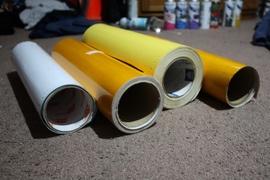 2 Vinyl: A synthetic plastic made from ethylene and chlorine. Vinyl has many applications in the construction industry and it is widely used in sidings, window frames, roofing and gutters, among others
2 Vinyl: A synthetic plastic made from ethylene and chlorine. Vinyl has many applications in the construction industry and it is widely used in sidings, window frames, roofing and gutters, among others
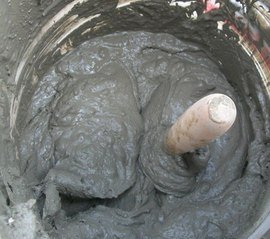 3 Mortar: A mixture of Portland cement or lime or a combination of both, sand, and water used to bind bricks, stones, and concrete masonry units together
3 Mortar: A mixture of Portland cement or lime or a combination of both, sand, and water used to bind bricks, stones, and concrete masonry units together
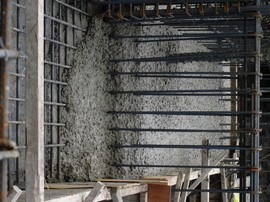 4 Reinforcing bars: (Also known as Rebar) A mesh or bar made of alloy, used in construction projects to reinforce concrete
4 Reinforcing bars: (Also known as Rebar) A mesh or bar made of alloy, used in construction projects to reinforce concrete
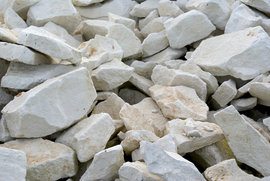 6 Limestone: A type of sedimentary rock, made up of mostly calcite and aragonite
6 Limestone: A type of sedimentary rock, made up of mostly calcite and aragonite
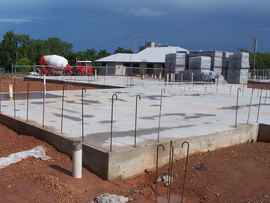 7 Slab foundation: A layer of concrete, poured over a prepared surface of soil or gravel, that supports a house or other building structure
7 Slab foundation: A layer of concrete, poured over a prepared surface of soil or gravel, that supports a house or other building structure
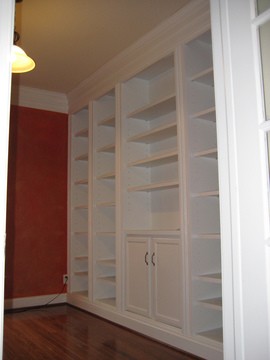 11 Built-in: An item of furniture, such as a bookcase or set of cabinets, that is built directly into the structure of the room. Built-ins are therefore customized to the room and not detachable
11 Built-in: An item of furniture, such as a bookcase or set of cabinets, that is built directly into the structure of the room. Built-ins are therefore customized to the room and not detachable
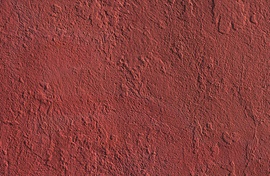 12 Stucco: A type of durable plaster finish made of aggregates, a binder, and water (traditionally Portland cement, sand, and water) used on masonry, walls, ceilings, and decorative moldings
12 Stucco: A type of durable plaster finish made of aggregates, a binder, and water (traditionally Portland cement, sand, and water) used on masonry, walls, ceilings, and decorative moldings
How much does it cost to build a retaining wall in my city?
Cost to build a retaining wall varies greatly by region (and even by zip code). To get free estimates from local contractors, please indicate yours.















